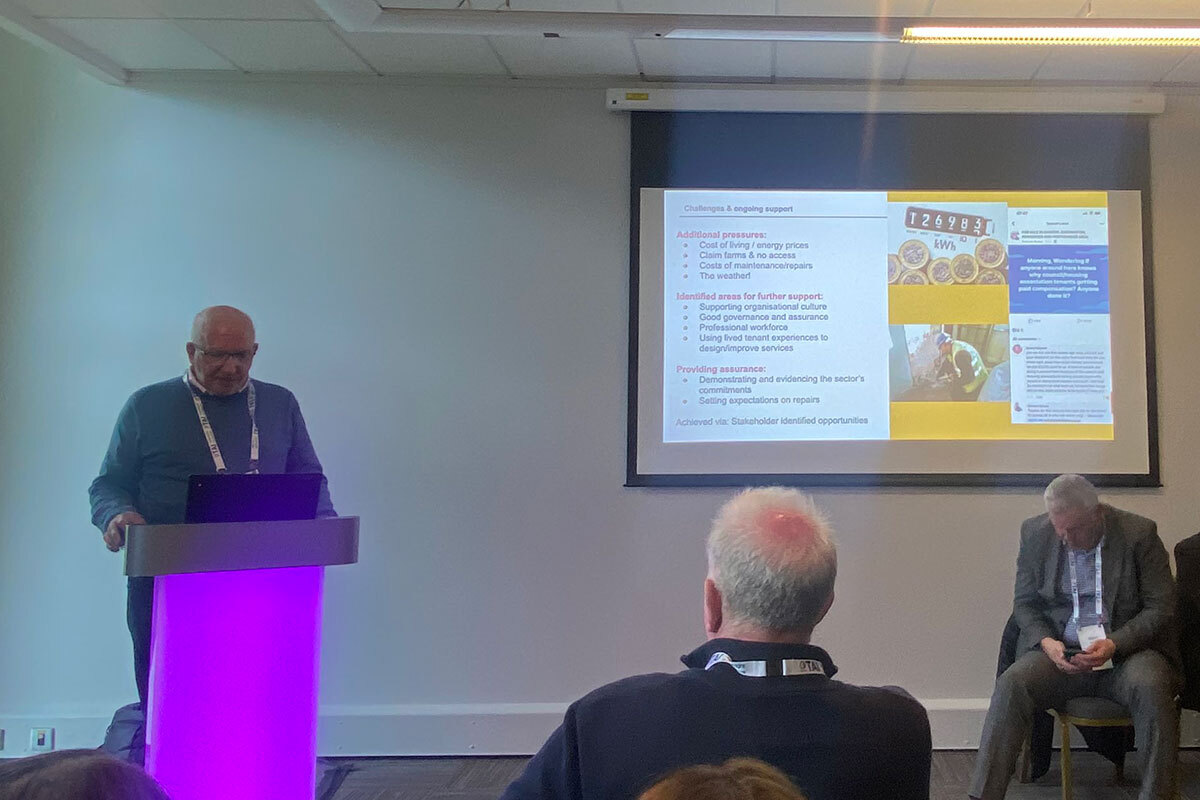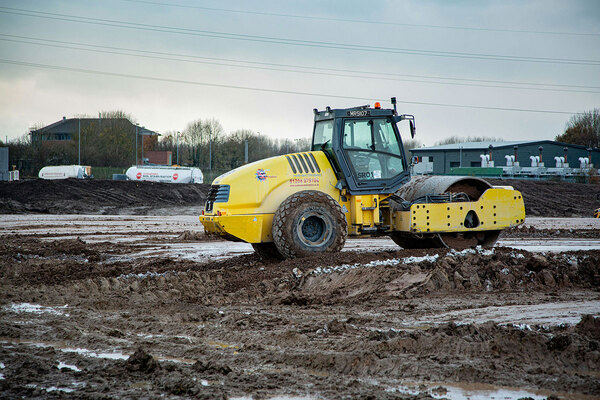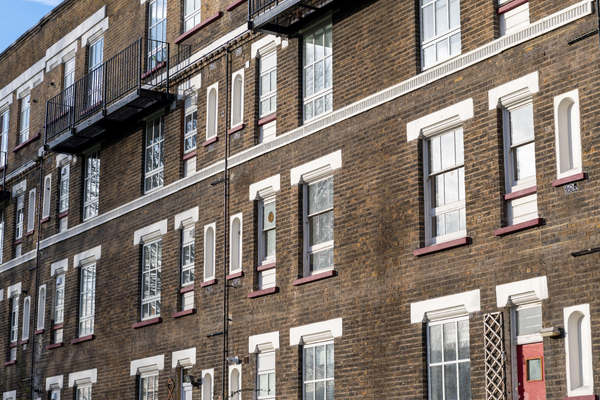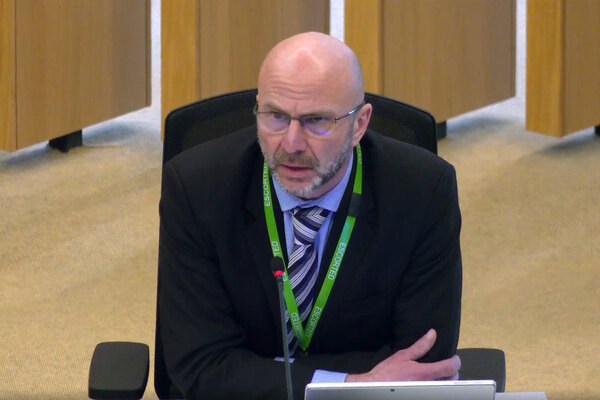You are viewing 1 of your 1 free articles
Welsh government to consult on timeframe for dealing with damp and mould as part of rule change to WHQS
The head of regulation at the Welsh government has confirmed that it intends to consult on a timeframe for dealing with instances of damp and mould as part of a change to the Welsh Housing Quality Standard (WHQS).
Ian Walters revealed the plan as part of a discussion at the Chartered Institute of Housing (CIH) Cymru’s annual Tai conference in Cardiff on Wednesday.
He was part of an afternoon panel discussion that outlined the Welsh sector’s response to the Better Social Housing Review (BSHR).
The BSHR was set up in June 2022 by the National Housing Federation and the CIH to help address the root causes of poor-quality homes. In England it made seven recommendations to improve quality and include tenants in decision-making.
In Wales, CIH Cymru and Community Housing Cymru, in partnership with the Welsh government, set up a stakeholder group to come forward with a response for the sector.
The plan to consult on a timeframe for dealing with damp and mould is the first of several proposals.
Mr Walters told delegates the Welsh government was collecting data to understand the scale of the issue and the work so far had resulted in two proposals.
The first was about sharing training and best practice from the work landlords and sector bodies in Wales had been doing already, including bringing in guidance from other sectors such as public and environmental health.
The second was about responding to hazards as set out under the WHQS, which will include damp and mould and will come with a timeframe for landlords to measure their performance against.
He said: “We are proposing a sector taskforce and to refine the rule for consultation and address some of the issues raised which have already been mentioned.”
Panellists raised concern about where the capacity and funding might come from to meet the new proposals and also pointed out the variation in the severity of some complaints.
Where some damp and mould issues could be solved by better ventilation, for example, or some other relatively minor repair remedy, others might require major works such as a new roof.
Mr Walters said that he believed any new rule would acknowledge these concerns, and that having better and more consistent data would also help.
He added: “I think it is important to recognise that many landlords are undertaking reviews and have given some really good examples of recent procedures and processes, allocating resources and introducing new technology to tackle issues of data more quickly and effectively.”
Andrea Lewis, the Welsh Local Government Association spokesperson for housing, and cabinet member for service transformation and deputy leader at Swansea Council, said there is a concern about capacity and what to prioritise given the myriad of challenges facing the sector.
Rising homelessness, the need to build new homes and invest in existing stock at a time of economic uncertainty and squeezed local finances were some of the areas for concern.
Ms Lewis said: “There are so many priorities at the moment and my concern is that we have just, as a council, completed our WHQS round one and that cost us around £0.5bn.
“The estimate for the next round is about £750m. So I don’t disagree with it. But give us time because we’ve only got so much capacity, and we know that our resources are smaller and demand is getting bigger.”
The challenge in investing in existing stock was not the only major talking point at the conference after a senior government minister admitted earlier in the day that the economic uncertainty and global unrest over the past few years is putting the Welsh government’s 20,000-home target at risk.
The cabinet secretary for housing, local government and planning told delegates that the government is “hanging on to our 20,000 target by the skin of our teeth”.
Julie James said: “I’m determined to hang on to it. We need far more than 20,000 homes. I honestly thought when we set that target that I’d be saying at this point in time, ‘well we’ve done that, we’re moving ahead’.”
Ms James pointed to the impact of the COVID-19 pandemic and the cost of living crisis in Wales, as well as an international picture of increasing unrest with the wars in Ukraine and Gaza.
The devolved administration hopes to hit this target for low-carbon social homes in the current Senedd term, covering 2021 to 2026.
In the first two years, 5,775 homes were delivered, according to the latest figures.
Sign up for our Wales newsletter
New to Inside Housing? Click here to register and receive our Wales round-up straight to your inbox
Already have an account? Click here to manage your newsletters












